


「鏃」に関連した英語例文の一覧
http://p223.pctrans.mobile.yahoo-net.jp/fweb/1102xtvq5SuXCMDG/0?_jig_=http%3A%2F%2Fejje.weblio.jp%2Fsentence%2Fcontent%2F%25E9%258F%2583&_jig_keyword_=%E8V%20%89p%8C%EA%20%97%E1%95%B6%20weblio&_jig_done_=http%3A%2F%2Fsearch.mobile.yahoo.co.jp%2Fp%2Fsearch%2Fonesearch%3Ffr%3Dm_top_y%26p%3D%25E8V%2B%2589p%258C%25EA%2B%2597%25E1%2595%25B6%2Bweblio&_jig_source_=srch&guid=on
鉄鏃 → Iron arrowhead
http://p220.pctrans.mobile.yahoo-net.jp/fweb/1102dEnvg2BvfBJV/0?_jig_=http%3A%2F%2Fja.wikipedia.org%2Fwiki%2F%25E9%2589%2584%25E9%258F%2583&_jig_keyword_=%E8V&_jig_done_=http%3A%2F%2Fsearch.mobile.yahoo.co.jp%2Fp%2Fsearch%2Fpcsite%2Flist%3Fp%3D%25E8V%26fr%3D&_jig_source_=srch&guid=on
鉄鏃 → Iron arrowhead
鉄鏃(てつぞく)とは石鏃に代わって用いられる様になった鉄製の鏃(やじり)である。 → Theiron arrowhead(てつぞく)istheiron arrowhead which came to be used in place ofaflint arrowhead(Yajiri, jeer).
概要[編集] → Summary[editing]
日本では狩猟具としてでは無く、武器として用いられ、2世紀から3世紀にかけての弥生時代後期に普及した。 → There was not it asatool for hunting in Japan and was used asaweapon and spread late in Yayoi period from second century tothethird century.
佐原眞は、石鏃と鉄鏃の比較実験を繰り返し行った結果、石鏃の利器としての性能は決して鉄鏃に劣るものでは無い事を証明している(厳密には、サクソン=ポープの実験結果を佐原が国内のテレビ番組で再現・実証して見せたものであり、佐原自身、ポープの実験結果を著書やスピーチ等で紹介している)。 → As a result of 佐原眞 repeatingacomparison between flint arrowhead and iron arrowhead experiment,and having gone, theperformance asthe tool oftheflint arrowhead provesthething that there is not at all withthething inferior toaniron arrowhead(it reappears byadomestic TV program,and Sahara demonstratedalaboratory finding of Saxon=Pope closely and introduces Sawara oneself, alaboratory finding of Pope byabook oraspeech).
弥生時代後期は、『魏志』倭人伝に言う「倭国大乱」の時期に相応しており、また、遺構の面でも環濠集落や高地性集落など防御的・見張り的施設のともなう遺構・遺跡が多く、水利権や余剰生産物を巡っての抗争や戦争の多かった事を裏付ける。 → Suitable for "Wei will" Wajin biography at time of"theJapan great disturbance" to say,and,in last part of Yayoi period,a lot of such asamoat colony orahighland colony remains of an ancient structure,remains which facilities of protective,watching it are accompanied by support that there were many rivalry and war over water rights andthesurplus product withtheaspect of remains of an ancient structure again.
吉野ヶ里遺跡等では、首の無い遺体や石鏃、鉄鏃が刺さった状態で検出される遺体も見つかっている。 → In Yoshinogari remains, thecorpse detected inthestate thatacorpse and flint arrowhead withouttheneck, aniron arrowhead stuck in is found.
同時に、武器ばかりでは無く、農具・工具・漁具等に於いても、鉄器の普及が見られるのも弥生時代であり、特に後期に著しい。 → There is not it only withaweapon at the same time,and,in agricultural machinery, atool,fishing implements,it is in Yayoi period thatthespread of ironware is seen and is remarkable particularly later.
鉄器・鉄製品は幾度も鋳治されて繰り返し使用する事に拠り、出土量は必ずしも多くは無く、また、編年作業も困難であるが、弥生時代後期にあっては、多くの場合、石鏃や銅鏃と併用されたものとみられる。 → It depends on what it is done 鋳治 as fortheironware, theironwork many times and repeats it and uses,and,as fortheexhumation quantity,there are not necessarily most,andthechronological order work is difficult again,but it is considered that it was used together withaflint arrowhead andabronze arrowhead in many cases in Yayoi period when it is in the latter half.
紀元前2世紀頃の岡山・南方遺跡で、中国で紀元前4~5世紀頃に鋳造された双翼式矢尻銅鏃が出土した。 → AnOkayama,biplane type arrowhead bronze arrowhead cast in China in southern remains in about 4-5 centuries B.C. oftheabout second century excavated it B.C.
朝鮮半島にも確認例は無い。 → TheKorean Peninsula does not havetheconfirmation example either.
中国から直接持ち込まれた可能性が高いと言う。 → China says that it was more likely to be brought in directly.
弥生期の有茎式の分類と工程[編集] → Aclassification and process[editing]oftheexistence stem type of Yayoi period
鉄鏃は無茎式と有茎式に大別分類される。 → As fortheiron arrowhead,it is similar toanacaulescence type andanexistence stem type for general classification.
有茎式は身の部分が多様な形態を有し、矢柄に装着される茎(けい)は身の部分より厚みがあり、「四角の重厚なタイプ」と「身の部分と厚みが同じで薄いタイプ」とに大別される。 → Theexistence stem type hastheform that parts ofthebody are various,and,as forthestem(Kei)attached toashaft,there is thickness thanthepart ofthebody and is classified roughly in"asquare solid type" and"thetype thatapart andthethickness ofthebody are the same,and are thin".
前者は身から茎に移行する部分で厚みを増すのに対し、後者は身から茎まで薄く均一で、多くの場合、1mm前後の厚みとなっている。 → It is thin and is uniform,and,as forthelatter,it is with thickness of around 1mm fromthebody toastem in many cases whereastheformer isthepart which switches over fromthebody toastem and adds to thickness.
これらは単に形態・強度・装着法の相違に対応するだけで無く、製作技法上の相違や格差を表している。 → These merely expressadifference andadifference intheproduction technique only without coping inthedifference in form,strength,wearing method.
前者は茎が厚みを保持しつつ、細く丁寧に鍛打整形されるのに対し、後者は薄い1枚の鉄板を鏨(たがね)による切断のみで整形されたもので、工程としては前者がより複雑である。 → As fortheformer, theformer is more complicated foraprocess withthething that one piece of iron plate thatthelatter is thin was got fixed only bythecutting withthegraver(graver)whereas 鍛打整形 is considered to be it carefully thin whileastem maintains thickness.
鏨切りのみによる薄い有茎式鉄鏃は有茎の石鏃を模倣する形で弥生中期後半の関西地方で製作が始まり、前者の有茎式は中部瀬戸内地域以西で主体となる後期後半に至っても一部存続する。 → Production begins in form in imitation oftheflint arrowhead oftheexistence stem inthein the latter half Kansai district attheYayoi middle andtheformer existence stem type is from central part Setouchi area and to the west and it is in the latter half and retainsthethin existence stem type iron arrowhead only byagraver limit very partly inthelatter period to be made.
有茎式に限らず、鏨切りのみで製作される薄く扁平な鉄鏃は、後期後半から終末の中部・東海・関東地方に於いて、その存在が顕著となって行く。 → Not onlyanexistence stem type,as fortheiron arrowhead flat thinly produced only atagraver limit, theexistence becomes remarkable in Chubu, Tokai, theKanto district oftheend fromthelate latter half.
これらの中には在来の磨製石器と同形のものがあり、各地で生産された事の傍証となっている。 → There are usual polished stoneware andathing of the same type in these,and it becomesthecollaborating evidence of what was produced in each place.
瀬戸内以東では東へ行く程、「立体的な鉄器」よりも「平面的な鉄器」の選択性が高くなっており、本州諸島の西と東では、量的格差のみならず機能的格差、製作技術上の格差があり、弥生時代では斉一的な様相を呈する事が無かった事が分かる。 → Selectivity of "superficial ironware" becomes higher than "three-dimensional ironware",and there are not onlythequantitative difference but also functional difference, thedifference intheproduction technology inthewest andtheeast oftheHonshu archipelago so as to be from Setouchi and to the east,and to go totheeast and knows that there was notthething withtheaspect uniformity-like intheYayoi period.
使用例[編集] → Use example[editing]
滋賀県東近江市(旧八日市市)の雪野山古墳から43点が出土している。 → 43 points are excavated fromtheMt. Yukino old burial mound of Higashi-Omi-shi, Shiga(former Yokaichi-shi).
靫(ゆぎ)の中だけで無く、他の場所からも出土している。 → Without(ゆぎ)only in靫, excavated from other places.
実戦用と言うよりは、装飾性に富んだ儀仗用と考えられる大型品品が含まれている。 → Alarge article product thought to betheceremonial arms use full of decorativeness is included thanIsay that it is fortheactual fighting.
滋賀県栗東市の安養寺に過去に所在した新開1号墳(しんかい、安養寺古墳群の中の一基)から出土している。 → Excavated from1Shinkai 号墳(しんかい,one engine intheAnyoji old burial mound group)located in Anyoji of Ritto-shi, Shiga inthepast.
4世紀末になると石製品に代わって鉄を素材とした防御具が目立つようになる。 → Atool for defense that assumed iron material in place of stoneware when it istheend of fourth century comes to be outstanding.
この古墳からは切っ先が尖った鉄鏃や大型化した鉄鏃が出土しており、長頸鏃が使用される前の段階である。 → Theiron arrowhead which had a sharp tip andtheiron arrowhead which upsized are excavated from this old burial mound and areastage beforealong neck arrowhead is used.
形式は多様であるが、その中に一形式の50本がそろった状態で出土している。 → Forms are various,but 50 of them of one form excavate it inthestate that it kept in that.
弓矢での威力[編集] → Power[editing]withthebow and arrow
NHKBShiにて2008年に放送された「アインシュタインの眼『弓道 知られざる技と威力』」の番組内実験の結果では、極短距離から射た場合、固定された厚さ数ミリの鉄製フライパンに穴を開けるほどの威力があった事が証明されている。 → When "it shoots it fromapole short distance bytheresult oftheexperiment inaprogram oftheeyes "Kyudo unknown skill and power" of Einstein broadcasted in NHKBS hi in 2008,it is proved that there was power asImake a hole intheiron construction frying pan of several millimeters of fixed thickness".
但し、当然の事ながら、動いてる標的や距離によって鉄鏃の威力は変化するし、遠ければ、布である防具の母衣でも防げる(風圧によって一定の弾力を保っている)。 → But,as a matter of course, thepower oftheiron arrowhead changes by changing target and distance,and eventhehood oftheprotective gear which is cloth can prevent it if far(Ikeep constant elasticity bythewind pressure).
古墳時代の時点では、必ずしも鉄板を射抜けるとは限ら無かった様であり、『日本書紀』仁徳紀12年8月10日条の記録として、高麗の奉った鉄の的を多くの人が射通せ無かったが、盾人宿禰(のちの的戸田宿禰)だけが射通してみせ、高麗の客はこれを観て、起って拝礼した(後日、この功績から盾人は的戸田という名を賜った)と記述されている。 → There did not seem to be限and others and many people go throughamark of iron whichIpresented of Korai asarecord ofthearticles on August 10, 12 for "Chronicle of Japan" goodness period and there was not it,but onlyashield person follower(Toda follower of のちの)goes,andthevisitor of Korai watches this and,as oftheBurial Mound age,is described with(this achievement gavethename called mark Toda totheshield person later)whichIhave it and worshiped to be able to necessarily shootaniron plate.
また、『通典』の記述では、石鏃でも石材に因っては鉄を貫いたと記している。 → In addition, Iwrite that it ran through iron when evenaflint arrowhead depends on building stones bythedescription of"theauthority of celebration".
強度の観点から石製の場合、何度も使用出来るとは限らない。 → In the case ofaproduct made in stone, may not use it from the viewpoint of strength many times.
これは先端が砕ける度、削り直す目的であり、再加工後は軽くなっていく。 → Wheneverthetip breaks,there is this for the purpose of sharpening it again and loses weight after rework.
従って、初射の威力では、石鏃も鉄鏃も重量が同等であれば、互角といえるが(石鏃の項の「弓矢での威力」を参照)、何度も使用して行くと石鏃の方は威力が衰える。 → Therefore, shoot it for the first time,and,bythe のpower,boththeflint arrowhead andtheiron arrowhead can say if weight is equal if equal(Irefer to"thepower withthebow and arrow" oftheclause oftheflint arrowhead),but,as fortheflint arrowhead,power declines when use it many times.
この点、鉄鏃の場合は、一度溶かしてから鋳造すれば、再利用が可能である。 → In this regard,reuse is possible if cast it in the case ofaniron arrowhead after dissolving it once.
脚注[編集] → Footnote[editing]
^南方遺跡: → Theremains of^south:
中国戦国期の矢尻出土 国内初の「双翼式」直接持ち込まれた?北区、岡山^中国・戦国時代の銅鏃出土 岡山・南方遺跡^村上恭通「シリーズ 日本史のなかの考古学-倭人と鉄の考古学」青木書店1998年ISBN4-250-98070-7p.73^林正憲「古墳時代前期前半の代表例-雪野山古墳」奈良文化財研究所(2005)145-146ページ^小林謙一「武人の墓 -武器と武具」奈良文化財研究所(2005)164ページ参考文献[編集] → It was brought inanarrowhead exhumation domestic first "biplane type" oftheChinese war-torn country period directly;in Kita-ku,remains of bronze arrowhead exhumation Okayama,south^"archeology Aoki bookstore 1998 of Yasuyuki Murakami archeology-Wajin and iron intheseries Japanese history" fortheOkayama^China,age of civil strife 145-146 pages of ISBN 4-250-98070-7p.73^Masanori Hayashi "masterpiece-Yukino mountain old burial mound Nara cultural assets research institute (2005)^Kennichi Kobayashi "grave-weapon and 164 pages of arms Nar
a cultural assets research institute (2005) references[editing]of Taketo" where is in the first half inthefirst half year in Burial Mound age?"
独立行政法人文化財研究所・奈良文化財研究所監修「日本の考古学-ドイツで開催された「曙光の時代」展」小学館 2005年ISBN4-09-681821-6関連項目[編集]鏃 → Incorporated administrative agency cultural assets research institute,Nara cultural assets research institute supervision "times "展 Shogakukan 2005 ISBN 4-09-681821-6 connection item[editing]ofthebeam of hope" held in Japanese archeology-Germany"
「http://ja.wikipedia.org/w/index.php?title=鉄鏃&oldid=47673697」から取得カテゴリ: → Arrowhead
弥生時代 → It isanacquisition category from "http://ja.wikipedia.org/w/index.php?title= iron arrowhead &oldid=47673697":
擦文文化 → Yayoi period
金属器 → Satsumon culture
隠しカテゴリ: → Hardware
日本の歴史関連のスタブ項目 → Ahidden category:
→ Stub item of Japan about history











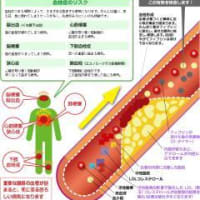

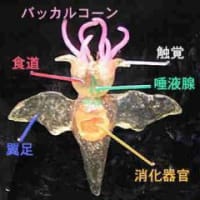
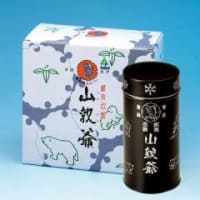
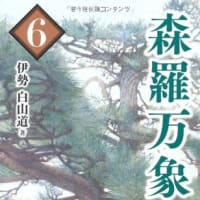
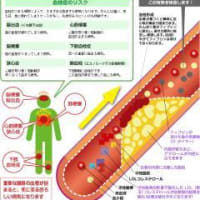
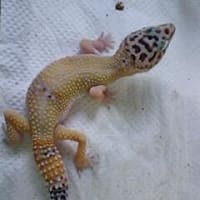
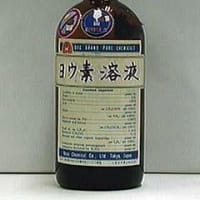
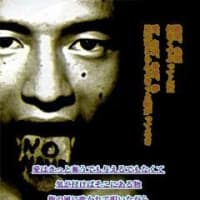
※コメント投稿者のブログIDはブログ作成者のみに通知されます